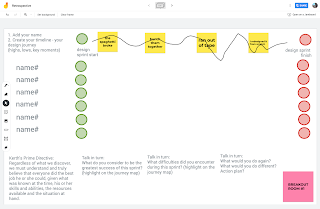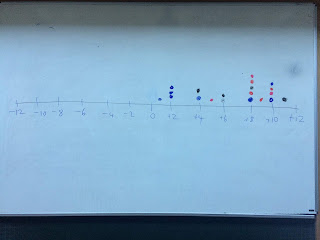Compulsory Reading: Catmull, E. 2008. How Pixar Fosters Collective Creativity. Harvard Business Review, 89, 9.
Listen to Ed Catmull's interview with Paul Michelman on HBR IdeaCast / Episode 109
How Does Pixar Foster Collective Creativity?
One industry compares well with that of software development; film. Both produce information goods, digital or digitisable products (Shapiro and Varian, 1998). Both rely on the highly creative work of their designers. Both are produced by teams and teams of teams. The industries themselves have become intimately interdependent as film studios’ demand for visual effects, modelling, simulation, special effects, post processing etc has driven rapid innovation in graphics and animation software.
 |
| John Lasseter at the 2009 Venice Film Festival (src: wikipedia). |
Software studios create the tools and techniques to produce effects that are used increasingly in films. Films using more realistic and convincing effects constantly push the boundaries of what is possible, and this in turn drives further technology development. The cross-over between software and entertainment is even ingrained into the culture of film, computing and programming. Computing and computer games have also been used as subject matter and characters, not just as tools, from the earliest days of film. We can even argue that visions of 'computing in film' precedes its realisation in reality e.g. Fritz Lang's Metropolis (
1927).
Pixar's Cultural Roots
Pixar grew out of Lucasfilm's CGI division which was formed by George Lucas to create the special effects for the first Star Wars trilogy. Lucasfilm's Graphics Group eventually became ILM (Industrial Light and Magic) and ILM in turn nurtured the early Pixar. In the days of Lucasfilm and ILM George Lucas encouraged wider intellectual engagement with academics and industry; the same culture was present in Pixar.
“...a film company that was pushing the boundaries. George didn’t try to lock up the technology for himself and allowed us to continue to publish… This made it possible to attract some of the best people in the industry…” (Catmull, 2008)
From its beginning Pixar considered engagement with others as an expression of their core belief in community and ‘relationships that matter.’
The Creative Crisis: With the Toy Story 2 project Pixar entered a crisis situation when they tried to release two high value projects in tandem; developing and producing A Bug’s Life in parallel with Toy Story 2, which was initially contracted to Disney as a 'release to video' offering. Pixar's ‘proven creative leaders’ had already moved on to the next project, "A Bug’s Life", while a second talented and capable team was working on Toy Story 2. However Pixar found that the second production team was not achieving the high production values, general quality and excellence that was the hallmark of Pixar movies. Pixar's "brain trust" eventually realised the Toy Story 2 team were failing on several levels.
“we had a good initial idea for a story, but the reels were not where they ought to have been by the time we started animation, and they were not improving. Making matters worse, the directors and producers were not pulling together to rise to the challenge.”
(Catmull, 2008)
Different reasons were posited to explain how the situation arose. Perhaps the lower quality production values of a direct to video project were a corrosive influence on Pixar’s values? Was the Toy Story 2 team demoralized by knowing that something less than acceptable was now acceptable? Was Pixar’s culture of excellence and in particular its image of ‘talent’ being corroded by Disney's definition of ‘acceptable quality’?
Toy Story 2 was now looking like it needed to be treated like crunch project with the all of the crazy demands of recovering a contracted production schedule that needed 18 months but only had 8. The problem was not in the high concept, but in the details, the coherence and logic of the narrative. Resolving the situation could have wide ranging impacts; much of the work they had thought was finished would have to be revised. Fixing it could impact character development, the storyline, CGI models, artwork, scenery, narrative, dialogue, soundtrack, EVERYTHING! Wouldn't it be easier to just ship a mediocre product? After all, excellence isn't everything?
References and additional sources (thanks to class members for links).
Catmull, E. 2008. How Pixar Fosters Collective Creativity. Harvard Business Review, 89, 9.
Lang, F. 1927. Metropolis (
link)
Panzarino, M. 2012. How Pixar's TS2 was lost and then found (
link)
Stopera, M. 2011. 33 things you probably didn't know about the Toy Story trilogy (
link)
Nusair, D. 2011. More things you didn't know about the Toy Story Trilogy (
link)
See the introductory section on Wikipedia (
http://en.wikipedia.org/wiki/Toy_Story_2) n.b. Most of the content on Wikipedia is from the 2008 book The Pixar Touch by David Price.














